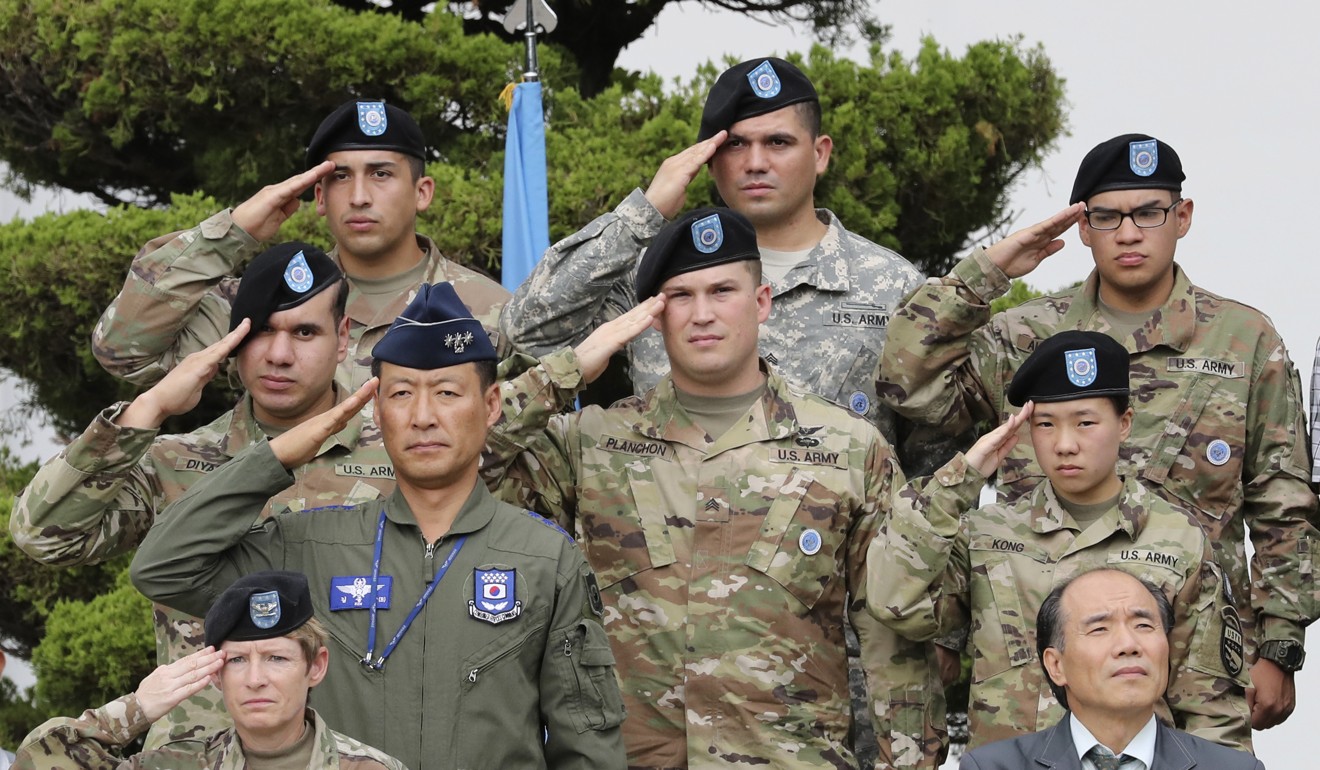
Why China is best-placed to cool the war rhetoric between Kim Jong-un and Donald Trump
John Barry Kotch says third-party diplomacy offers the best hope after the US and North Korean leaders ramped up their missile threats
In his landmark study, The Origins of the Korean War, historian Bruce Cumings reflected on the “strange fate [which] had brought a one-time farm boy from Golconda, Illinois, Lt Gen John Hodge, to rule over the fortunes of 15 million Koreans”.
A three-star combat veteran of the Pacific war, Hodge arrived in Korea in September 1945 as commander of the XXIV Corps, to plant the American flag on the peninsula as well as staunch the flow south of Colonel General Ivan Chistyakov’s 25th Red Army at the 38th parallel: the start of a three-year US military occupation of South Korea that eventually set the stage for the Korean war.
History has much to teach about crises, and miscalculation in confronting them
Watch: George W Bush reveals the ‘Axis of Evil’
Dwight Eisenhower, the five-star US general who became president, noted that “every war will surprise you” – and the Korean war was no exception.
The Soviets and North Koreans were surprised that the US intervened (even the Americans were surprised, both by the invasion itself and by the decision to intervene, having previously ruled out defending South Korea); South Koreans were surprised that their army melted away in the face of the North Korean onslaught, overrunning Seoul in a few days, while the North Koreans were surprised to encounter US forces as they swept down the peninsula, having counted them out in planning the invasion. They were doubly surprised when US/UN forces crossed the 38th parallel and laid waste to the North. Finally, the Chinese were surprised that the Americans didn’t halt well before their border, having warned them away, while the Americans led by General Douglas MacArthur were totally surprised by Chinese troops crossing the Yalu River undetected.
The original goal of unifying the peninsula remained beyond reach
The only event that didn’t surprise the combatants was how the war ended – in a stalemate, with neither side able to dislodge the other, at a reasonable cost in lives and treasure – while the original goal of unifying the peninsula remained beyond reach and still is.
If “the past is prologue”, what of the present and future, and what surprises await?
The current crisis was triggered by press reports based on intelligence assessments that Pyongyang had become capable of launching an intercontinental ballistic missile that could reach the US mainland, and successfully miniaturised a nuclear warhead roughly two years ahead of previous estimates; another big surprise and a psychological boost for Pyongyang.
Watch: North Korea claims successful ICBM test
US should prepare to shoot down North Korean missiles if Kim doesn’t ditch Guam strike plan
But while Trump’s incendiary remarks have been partially offset by Secretary of State Rex Tillerson’s call for dialogue, defence chief James Mattis’ focus on “diplomatic traction”, and Joint Chiefs of Staff chair Joseph Dunford’s emphasis on achieving “denuclearisation through diplomatic and economic pressure” – mixed messages from the commander-in-chief and his chief policymakers have trumped policy coherence.

US national security officials do their best to walk back Trump’s threats to unleash ‘fire and fury’
With the leaders in both Washington and Pyongyang out on a limb of their own making, third-party diplomacy offers the best hope of bridging two unpalatable alternatives; acquiescence and acceptance of the North as a de facto nuclear state, and military action to eliminate the threat.
Above all, Guam should be off-limits. A second Korean war is in no one’s interest.
John Barry Kotch is a political historian and former US State Department consultant

